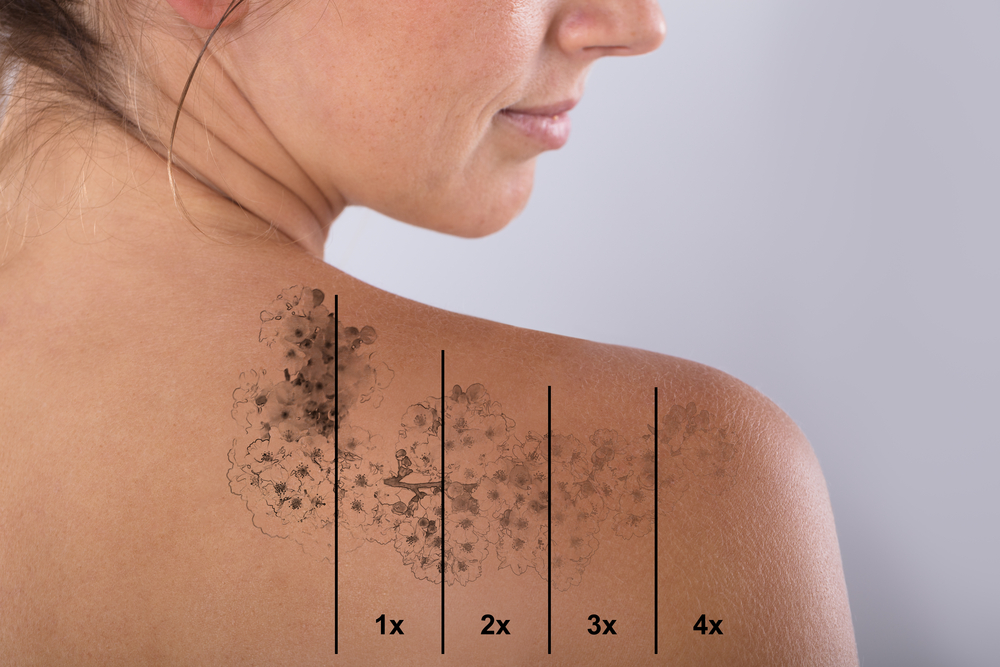Laser tattoo removal that 6 wrong things to avoid
laser tattoo removal before and after
Revising that ink? If you've never fallen in love with your own tattoo, laser tattoo removal is a simple safe (albeit expensive) way to accomplish the task.
In the interest of laser removal and the way celebrities have expressed their interest in showing us its use on social media (Khloe Kardashian, I'm talking to you), standing tattoo seems less like a comment. But "they're not like magic erasers," as dermatologist Amy Wechsler, MD, has stated herself before - it's more than you think.
Lasers are helpful, efficient and effective when it comes to tattoo removal, but there are many misconceptions about what they can (and cannot) do. Here is what you should know about the laser process first - before you voluntarily equip that questioned lyric lyric with your arm - or remove something old.
Myth # 1: Laser Removal Offering Is Safe Wherever It Is
Laser centers and spas are popping up everywhere, but it's important to make sure that laser removal is done by a dermatologist. "Dermatologists know how to recognize, how to look for a complication, and whom not to treat," says Robert Anolick, MD, a board-certified dermatologist himself. Laser tattoo removal has the risk of bleeding, infection and scarring, all of which can be treated successfully but only with the proper care of a dermatologist.
It is up to you to verify your physician's qualifications. New Jersey is the only state that requires licensed physicians to administer a laser, which means that in most places, there are fewer road blocks than it offers on laser removal.
Myth # 2: Laser Removal is a simple, fast, reliable and easy solution to a bad tattoo.
"The big misconception with tattoo removal is that it is a wipe," Sheriff F.W. Ibrahim, M.D., associate professor of dermatology at the University of Rochester, told S.L.F. However, this is not so easy. "It's a process," he says. Sometimes, complete removal of tattoos can take a year or two, every 6, 8, or 12 weeks after treatment.
Also, it's not like getting socks on your eyebrows - it's an invasive process that costs several hundred dollars in one session.Lasers remove tattoos by blowing up pigment molecules into tiny pieces, which are then cleared away by an immune system response. "zeiva laser Healing from laser treatments is not always a walk in the park. "The laser breaks the surface of the skin, so you are bleeding, you have a rash and you have pain after treatment," says Dr. Ibrahim.
Myth # 3: Deleting a tattoo is not painful.
Laser tattoo removal can be painless, but it is usually because physicians can give you a sedative agent first. For larger tattoos where the removal process takes longer, a physician may give you a lidocaine injection to continue the area, but a physician professional may not.
Short tattoos are just as painful to remove as the laser settings reflect the color rather than the size of the tattoo. However, the pain you end up with for removing a small tattoo is less ongoing than what you experienced when removing a large tattoo, making it more bearable for anyone.
Myth # 4: Laser removal is safe for everyone.
Not everyone is the ideal candidate for laser removal. "Based on laser physics, skin removal is always more difficult for patients with darker skin tone and laser function," says Susan Bird, MD, a board-certified dermatologist and fellow MD of the American College of Mohs Surgery.
But, at the same time, it can also target melanin in your skin The Ga er skin a laser to remove tattoos ় more likely to be used more and more complex, "" laser removal of the skin, dark ় Ga Ga ones haiparapigamentesana ় letters and can be burned.
Myth # 5: All tattoos are equally easy to remove
Not all tattoos are created equal. “Black tattoos are easier to remove than brightly colored tattoos. Green and blue are somewhat challenging, and it is almost impossible to completely remove things like yellow, white and purple, "says Dr. Ibrahim."
Laser wavelengths target different skin types, "says Dr. Bird. Laser Needs This is one more reason to look for a skilled specialist for treatment - if you have a leg If the removal is done properly, you should see about 90 percent of the discounts on a tattoo, Dr. Anlick says.
You cannot be sure that you are going to get a hundred percent discount on a tattoo, and it can be done for a variety of reasons, including ink types and if [tattoos] are professional tattoos. Was done by the parlor, "says.
Professional tattoos add more color and accumulate more deeply into the dermis, which is their Makes it even more challenging, Fancy tattoos are easier to remove because they often carbon-based, single letters, and more high starerabhabe is placed. Dr Ibrahim says the same is seen in old tattoos, where the ink fills upward with the ink, and it facilitates breakup with a laser.
Tattoo removal before and after face
Myth # 6: If you do not see a reaction to taking a tattoo, you have no reaction to delete it.
It is possible to have a smooth cure after taking your tattoo but still have a weak reaction to laser removal. For one, lasers can cause skin rashes and permanent skin discoloration that tattoos may not (except in the most obvious way, of course).
Some of the most asked question about Tattoo Removal .
What is the best method for tattoo removal?
The best way to remove tattoos is to use standard-switched, or cue-switched, lasers that have been widely used in the past decade. The light beam detects skin tone and intensity in the skin with ink and pulse to make the ink split into tiny particles large enough to absorb the body.





Post a Comment
Thanks for your comments .Please do not embed any spam link